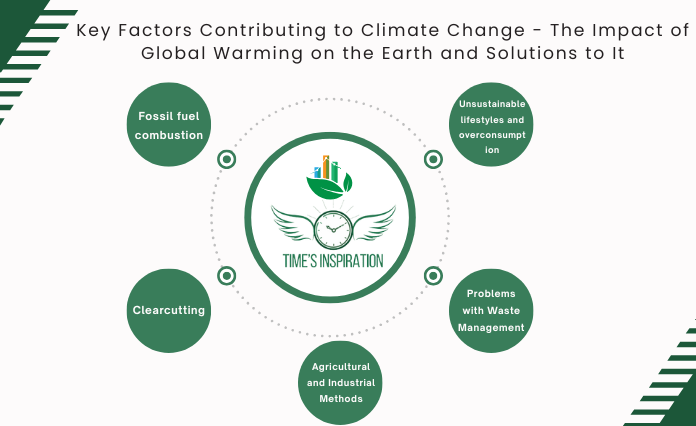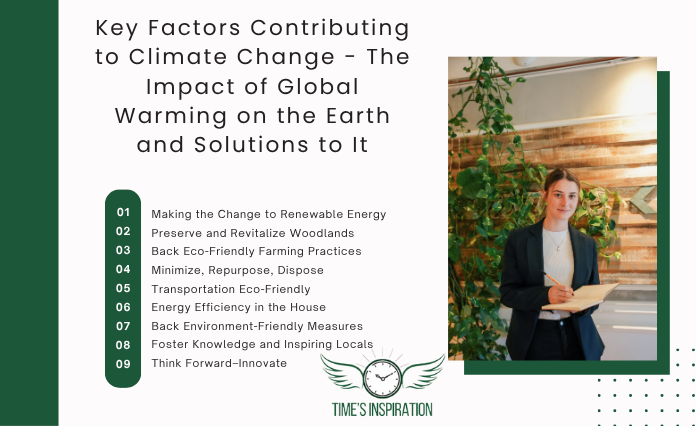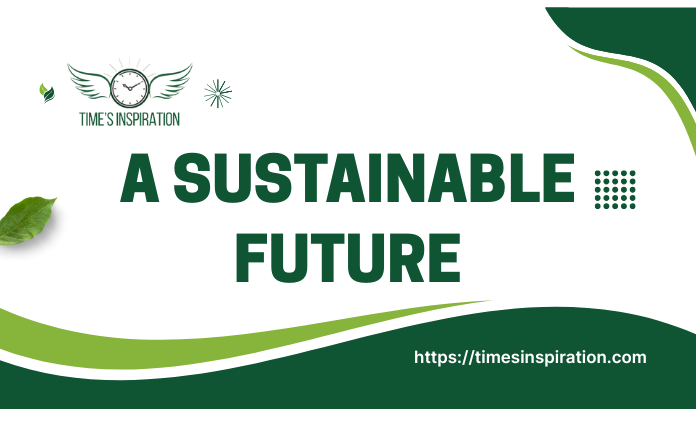The Impact of Global Warming on the Earth and Solutions to It
- October 12, 2025
- 0
A Planet in Peril Due to Climate Change and the impact of Global Warming The Impact of Global Warming on the Earth and Solutions to It- Earth is
A Planet in Peril Due to Climate Change and the impact of Global Warming The Impact of Global Warming on the Earth and Solutions to It- Earth is

The Impact of Global Warming on the Earth and Solutions to It- Earth is experiencing rapid warming. Despite its seeming insignificance, the 1.2°C increase in average global temperatures over the last century has had catastrophic effects. World weather is becoming more unpredictable and extreme as a result of global warming, which is causing glaciers to melt and sea levels to rise.
While the science is in, each individual and the community must work together to find a solution. Climate change isn’t some faraway danger; it’s here and now. Further, everyone—from individuals to communities to governments—must do their part to reduce its pace.
Follow Us on Our Social Media Platform – Facebook
Read on to learn about the effects of global warming on Earth, how it permeates all parts of life, and what we can do to save this planet we all call home.
Human activities, particularly the production of greenhouse gases such as carbon dioxide (CO₂), methane (CH₄), and nitrous oxide (N₂O), are the primary cause of the long-term increase in Earth’s average surface temperature, which is referred to as global warming.
As a result of these gases’ ability to trap heat, the “greenhouse effect” is brought about. Although this is a normal and essential process for maintaining a habitable world, the enormous emissions caused by the burning of fossil fuels, the clearing of forests, and industrial processes have intensified it to an unprecedented degree, resulting in catastrophic warming.
Human activities are the primary cause of global warming. The primary authors are:

Powering homes, businesses, and transportation with coal, oil, and natural gas results in enormous atmospheric CO₂ emissions.
By soaking up carbon dioxide, forests serve as carbon sinks. Deforestation impairs Earth’s capacity to regulate atmospheric concentrations of greenhouse gasses.
Methane and nitrous oxide, which are more effective heat traps than CO₂, are released by chemical fertilizers, cattle farms, and factories.
While organic garbage breaks down in landfills, it releases methane into the atmosphere. Soil and air pollution are both caused by improper garbage disposal.
Carbon footprints are exacerbated by consumer habits, rapid fashion, and excessive energy consumption; so, modifying one’s way of life is essential.
From the polar ice caps to the tropical rainforest, the entire world is being impacted by global warming. Ecological, social, and economic systems are all touched by its ripple effects.
Nearly four times the rate of global warming is occurring in the Arctic. City dwellers and island states are at danger as a result of rising sea levels caused by the melting of glaciers and polar ice caps. Sea levels might rise by as much as one meter by 2100, according to scientists, causing millions of people to be displaced.
Wildfires, floods, droughts, and hurricanes are all fueled by climate change. Storms become more intense as oceans warm, and forests become fire hotspots when vegetation dries out due to rising temperatures.
Because the oceans take in around 30% of CO₂ emissions, their acidity is increasing. Damage to coral reefs, plankton, and fish causes ecosystem disruption and endangers billions of people’s access to food.
Species are compelled to relocate or risk extinction as a result of altering climates and environments. There has been a 60% decrease in animal populations in the last 50 years, according to the World Wildlife Fund (WWF).
Crop yields are reduced and food security is threatened by unpredictable weather patterns, floods, and droughts. Farmers are forced into poverty in some areas because conventional crops can no longer be grown.
Heatwaves are a leading cause of death, and as the world warms, diseases like dengue and malaria are spreading at a faster rate. Polluted air makes respiratory and cardiovascular illnesses more worse.
In addition to causing displacement and damage to infrastructure, natural catastrophes can decrease productivity. Neglecting to address climate change could result in 200 million people migrating by the year 2050.
A person’s life is directly impacted by global warming. All of these things have an impact on our daily lives, from the air we breathe to the food we eat to the water we drink.
Without intervention, the repercussions of climate change will be felt by all people, regardless of where they live or their financial status.
Despite the enormity of the problem, answers are not far away. Changing policies, being creative, and taking personal responsibility are all necessary to fight climate change.
Reduced carbon emissions are possible through the use of renewable energy sources such as solar, wind, hydro, and geothermal power, which can replace fossil fuels. Businesses and governments alike need to put more money and incentives into this shift so it happens faster.
In addition to regulating the climate, trees absorb carbon. The only way to stop the accumulation of CO₂ is to plant new trees, or engage in sustainable forestry techniques.
We can increase soil health and decrease emissions by encouraging organic farming, crop rotation, and plant-based diets.

In the fight against global warming, one of the easiest and most effective weapons is better waste management. Reduce the use of single-use plastics, compost organic waste, and recycle as much as possible.
Advocate for the use of e-bikes, public transportation, walking, and public transit. Greener choices can reduce the emissions of transportation, which is responsible for almost 25% of the world’s CO₂.
A little goes a long way. To reduce your power consumption, try using energy-efficient appliances, unplugging electronics, switching to LED bulbs, and insulating your home.
Support environmental conservation by voting for leaders and policies that do the same. Act now to educate the public about climate change, invest in renewable energy, and impose carbon taxes.
Become conscious of the situation and take steps to correct it. Sustainability should be emphasized in schools, media, and organizations, along with practical actions that everybody can do.
Promote studies and innovations that help the environment, such as carbon capture, sustainable packaging, and green building.
You can make an impact even if you aren’t a politician. Any and all actions matter:
Awareness is the first step toward change, and group action increases that impact.
There are no national boundaries when it comes to climate change. Countries joined forces in 2015 to sign the Paris Agreement, which aims to keep global warming below 2 degrees Celsius. But constant application is the key to true achievement.
It is imperative that industrialized nations take the lead in reducing emissions, lending aid to developing nations, and funding environmentally friendly technologies. Achieving climate stability requires international cooperation, openness, and responsibility.
Hope persists in the face of adversity. The cost of renewable energy is going down. The voices of young activists are being heard. Companies and governments are aiming for net-zero emissions.

More and more, people are starting to take action, from local campaigns to international climate conferences. Sustainability isn’t a choice; it’s a need for our continued existence.
The issue of global warming is not some faraway future; it is here and now. Time is of the essence, the dangers are great, and the proof is indisputable.
We are not helpless, though, and that is excellent news. By making thoughtful choices like planting trees and switching to renewable energy, we can all contribute to a world that is healthier, cooler, and more resilient.
We can preserve Earth for future generations as well as for our own if we all make a personal commitment to change.
There is no “Planet B” in relation to Earth.
Subscribe Now